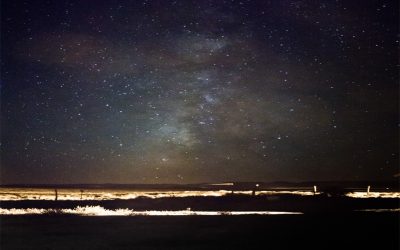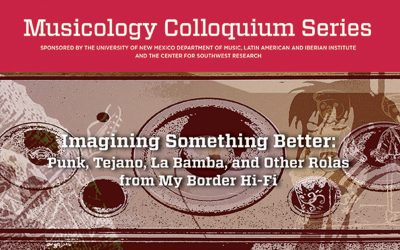The University of New Mexico’s Department of Music and the College of Fine Arts welcomes Dr. Solis to Keller Hall for his lecture on Thursday, February 18th at 2:00pm, “The Black Pacific: Music, Race, and Indigeneity in Australia and Papua New Guinea.”
From the Fisk Jubilee Singers’ tour of Australasia in the 1890s to Snoop Dogg’s visit to Brisbane in 2014, the last century has seen ongoing, intensive intersections between Indigenous and African Diasporic musicians and activists in the Southwestern Pacific. Dr. Gabriel Solis explores the musical history examining how it represents a continuation of older Indigenous cosmopolitanism and a newer structure, emerging alongside colonial processes.
 Dr. Gabriel Solis is Professor of Music, African American Studies, and Anthropology at the University of Illinois, Urbana-Champaign. A scholar of historical ethnomusicology, he has done research in the U.S, Australia, and Papua New Guinea. His work focuses on musical racialization as a component of global modernity. In addition to the books Monk’s Music: Thelonious Monk and Jazz History in the Making (2008), Thelonious Monk Quartet with John Coltrane (2014), and Musical Improvisation: Art, Education, and Society (2009, co-edited with Bruno Nettl), he is the author of articles and book chapters that have appeared in such journals as Ethnomusicology, Popular Music and Society, the Journal of the Royal Musical Association, the Musical Quarterly, Musicultures, and Critical Sociology.
Dr. Gabriel Solis is Professor of Music, African American Studies, and Anthropology at the University of Illinois, Urbana-Champaign. A scholar of historical ethnomusicology, he has done research in the U.S, Australia, and Papua New Guinea. His work focuses on musical racialization as a component of global modernity. In addition to the books Monk’s Music: Thelonious Monk and Jazz History in the Making (2008), Thelonious Monk Quartet with John Coltrane (2014), and Musical Improvisation: Art, Education, and Society (2009, co-edited with Bruno Nettl), he is the author of articles and book chapters that have appeared in such journals as Ethnomusicology, Popular Music and Society, the Journal of the Royal Musical Association, the Musical Quarterly, Musicultures, and Critical Sociology.
Students from Dr. Kristina Jacobsen’s class, “Diné (Navajo) Expressive Culture,” help build a shadehouse (cha’a’oh) as part of a service-learning project and cultural immersion camping trip to the Navajo Nation.
The class focuses on music, language, poetry, film and expressive arts in the context of sovereignty and contemporary politics on the Navajo Nation.
Santiago Vaquera-Vásquez: Imagining Something Better: Punk, Tejano, La Bamba, and Other Rolas from My Border Hi-Fi
Unrepentant border crosser, writer, ex-dj, and academic. Santiago Vaquera-Vásquez is an Associate Professor of US Southwestern Literatures, and Creative Writing in the Department of Spanish, and Portuguese at the University of New Mexico.
Music from the Americas presents “Scaling the Wall”
“Scaling the Wall” is a project that promotes works for flute by Canadian, American and Mexican ex-patriate composers. It seeks to showcase how contemporary composers connected to those countries have successfully bridged the political, cultural and geographic borders crossing the western 100th meridian. Featured composers’ works vary in style, instrumentation and compositional approach, but also illustrate the universality of music, regardless of nationality.



